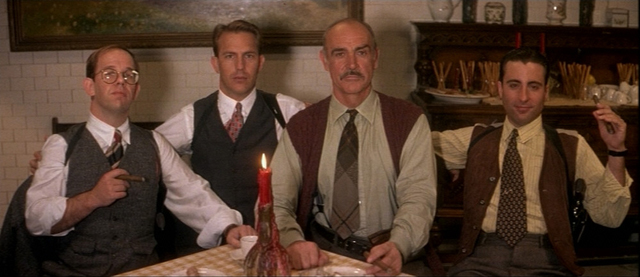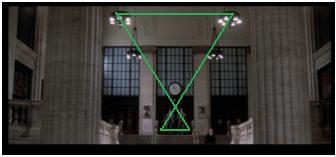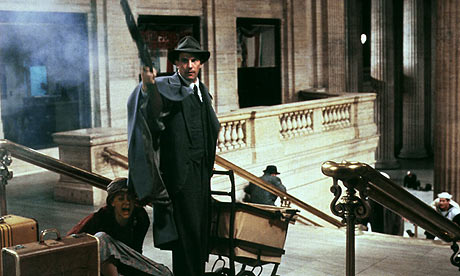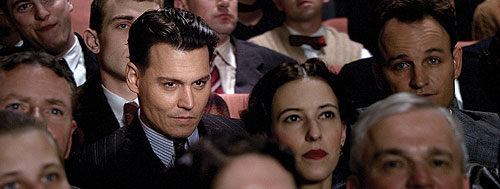EVENT IN STOCKHOLM CLOSES WITH SCREENING OF THE UNTOUCHABLES
 Hello and welcome to the unofficial Brian De Palma website. Here is the latest news: |
|---|
E-mail
Geoffsongs@aol.com
-------------
Recent Headlines
a la Mod:
Listen to
Donaggio's full score
for Domino online
De Palma/Lehman
rapport at work
in Snakes
De Palma/Lehman
next novel is Terry
De Palma developing
Catch And Kill,
"a horror movie
based on real things
that have happened
in the news"
Supercut video
of De Palma's films
edited by Carl Rodrigue
Washington Post
review of Keesey book
-------------
Exclusive Passion
Interviews:
Brian De Palma
Karoline Herfurth
Leila Rozario
------------
------------
| « | August 2010 | » | ||||
| S | M | T | W | T | F | S |
| 1 | 2 | 3 | 4 | 5 | 6 | 7 |
| 8 | 9 | 10 | 11 | 12 | 13 | 14 |
| 15 | 16 | 17 | 18 | 19 | 20 | 21 |
| 22 | 23 | 24 | 25 | 26 | 27 | 28 |
| 29 | 30 | 31 | ||||
De Palma interviewed
in Paris 2002
De Palma discusses
The Black Dahlia 2006

Enthusiasms...
Alfred Hitchcock
The Master Of Suspense
Sergio Leone
and the Infield
Fly Rule
The Filmmaker Who
Came In From The Cold
Jim Emerson on
Greetings & Hi, Mom!
Scarface: Make Way
For The Bad Guy
Deborah Shelton
Official Web Site
Welcome to the
Offices of Death Records
 A couple of months ago, Aint It Cool's Capone interviewed Andy Garcia and asked him about his experience making Brian De Palma's The Untouchables. Garcia shared some interesting tidbits about his character's introduction within the film...
A couple of months ago, Aint It Cool's Capone interviewed Andy Garcia and asked him about his experience making Brian De Palma's The Untouchables. Garcia shared some interesting tidbits about his character's introduction within the film...Capone: Yeah.
Garcia: I said “Wow, what an entrance in the movie.” I think that’s the movie that made James Coburn and got him known as an actor. I remember as a child being so impressed by that scene and saying “I want to be that guy!” Being lost in that concept that was engrained in my mind, and my scene in THE UNTOUCHABLES is basically the James Coburn scene, there’s a gun and whatever and the sharp shooter instead of a knife, but it’s basically that scene.
IT "HADN'T FOUND ITS WAY INTO THE SCRIPT YET"
Garcia also told Capone about his reaction when he found out he would be riding a horse in the film. It is interesting that De Palma already had storyboards for this sequence prior to it being added to the script...
Capone: The bootlegging sequence right on the Canadian border, right?
Garcia: Right, but when it got to Chicago, Brian [De Palma] took me into a room and had this whole thing storyboarded, but with stick figures. Those were his storyboards, like “Here’s the three shot…” And he says, “Well, I’m going to have you guys on horses,” and in the script there was nothing to do with horses, so I was like “Brian, my character has never been on a horse… This guy’s from the Southside of Chicago…” He looked at me and he said, “No, no, he’s an expert horseman” and I go “How is he an expert horseman?” He goes “Fuckin' figure it out.” I said “Oh, thanks." The guy’s from the Southside of Chicago, now he’s going to be an expert horseman.” [laughs]
It was something that he conceived that he wanted to have us on horses, and it’s something that he adapted in the script, but hadn’t found its way into the script yet, and so me as an actor was like “Oh God… First of all, I’ve got to get on a horse.” So I started taking lessons at this equestrian center here somewhere in town or nearby where it had like a ring, so I got on the horse and I told the costumers “Find me a tie pin or a lapel pin, something that has a horses head just so I can have some sort of connection to…” So I concocted this idea and did some research, there were some stables in a Chicago park here in the inner city that my father or my grandfather as an immigrant, he was like a stable boy and he took care of the stables. When I was a little kid, I would go visit him and I was helping him in the stables, and that's how I knew how to ride. So I had to concoct this whole backstory just to justify “How does this kid from Southside Chicago become an expert horseman?” Then I had two weeks to be an expert horseman.
Capone: There you go.
Garcia: [Laughs] So that’s my UNTOUCHABLES story. Then I just had to concentrate on not falling off when the horses were going 40 miles an hour.
"SUMMER SCENES WE LOVE" AT CINEMATICAL
Meanwhile, earlier today, Scott Weinberg at Cinematical posted a "Summer Scenes We Love" featuring, out of all the great scenes in the film, the opening credits for The Untouchables, which are, of course, simply the best.

 At H i M i P o V, Randy Aitken has written a monster of an essay analyzing the train station sequence in Brian De Palma's The Untouchables with the good-humored belief that “the devil is in the details”—rhythms, numbers, shapes, and symbols. Randy’s essay is generously illustrated with screen grabs such as the one shown here at left. Below is an example in which Randy is riffing on the use of numbers and teamwork:
At H i M i P o V, Randy Aitken has written a monster of an essay analyzing the train station sequence in Brian De Palma's The Untouchables with the good-humored belief that “the devil is in the details”—rhythms, numbers, shapes, and symbols. Randy’s essay is generously illustrated with screen grabs such as the one shown here at left. Below is an example in which Randy is riffing on the use of numbers and teamwork:The establishment of a deadly horizontal relationship of the bookkeeper's head caught in between an arm and a gun has changed into a new deadly horizontal relationship between Stone's gun and Bowtie's head.
The angle of the straight line has moved counterclockwise 90 degrees.
And at the end of the straight line is a circle that has become divided into life and death.
As Bowtie's head slips out of frame downwards, an artistic modern abstraction of bloody red color is in evidence. De Palma the artist has thrown some paint upon the canvas for the audience and the characters to admire and comprehend. Bowtie has been zeroed out and we have to decide if Mr. Average, middle-American bookkeeper likes being an art critic, and we wonder if we see ourselves or the character in the canvas that he is standing too close to.
This idea of a making a connection between a straight line and a circle attached to it literally or through implication can be seen in the climax of the basement in Psycho, as well as Burke's activities in Blow Out.
PODCAST DISCUSSION
Meanwhile, at Chin Stroker VS Punter, the two British men of the title discuss The Untouchables in-depth in a podcast that runs about 90 minutes.
 John Kenneth Muir continues his weekly look at select Brian De Palma films with a wonderful analysis of The Untouchables, which he calls "De Palma's mainstream masterpiece," it being "a visual exercise in mythbuilding." Muir characterizes The Untouchables as a war film, stating, "On the surface, the brutal struggle in The Untouchables appears to be one regarding law enforcement, but the movie's tone and visuals make it plain that this is not entirely the case. On the contrary," Muir continues, "this is total war, a fact De Palma makes plain via cross-cutting. Early in the film, he cross-cuts between Capone decrying violence as 'not good business' and then a scene involving a little girl murdered in what, essentially, is a terrorist bombing of a local Chicago saloon."
John Kenneth Muir continues his weekly look at select Brian De Palma films with a wonderful analysis of The Untouchables, which he calls "De Palma's mainstream masterpiece," it being "a visual exercise in mythbuilding." Muir characterizes The Untouchables as a war film, stating, "On the surface, the brutal struggle in The Untouchables appears to be one regarding law enforcement, but the movie's tone and visuals make it plain that this is not entirely the case. On the contrary," Muir continues, "this is total war, a fact De Palma makes plain via cross-cutting. Early in the film, he cross-cuts between Capone decrying violence as 'not good business' and then a scene involving a little girl murdered in what, essentially, is a terrorist bombing of a local Chicago saloon." In that film, the famous "Odessa Steps" sequence dramatized a massacre conducted by the Tsarist Regime, set atop a wide staircase. Civilians were brutally murdered in this bloody sequence, as Cossacks killed men, women and children. Famously, a baby carriage was depicted rolling down the staircase.
In original context, the Odessa Steps sequence was meant to demonize the Imperial Regime, to expose the fact that there was no depth to which it would not sink to hold onto to power in Russia. The scene is so famous in cinema history that some people have apparently believed that there was a massacre on the Odessa Steps even though the incident was a fictional one concocted for the film.
Those who accuse De Palma of lifting the Odessa Steps sequence from The Battleship Potemkin should take one extra step -- beyond that of accusation -- and ask themselves why? What purpose does it serve to feature a similar sequence here, in this movie?
On one hand, we can certainly point to the deliberate homage and intertextuality we see throughout De Palma's canon. But furthermore, there's a reflexive quality to this reference in The Untouchables. To wit: the battle for capitalist control of Chicago is occurring, roughly, in the same time period that The Battleship Potemkin was made and distributed (circa 1925 - 1930). In other words, by cutting and shooting a sequence just like the Odessa Steps, De Palma is actually reflecting something that the characters of the time might have themselves conceivably understood or known about.
Much more importantly, however, De Palma has created a thematic relative of Potemkin; a kind of "pop" form of propaganda; a heroic myth elevating the G-Men in stature and deriding a corrupt system and the criminals -- like Capone -- who exploited it (the capitalist equivalent of the Tsarists).
De Palma's point -- captured beautifully in the slow-motion shoot-out -- is that Capone's Regime (like that of the Cossacks...) boasts no moral compunction about the murder of the innocent. It will hold onto control any way it can, as we have seen in the corner saloon bombing and now with the imperiled baby carriage. Ness's task is much more difficult: he must eliminate the entrenched, powerful bad guys (the hench-men of Capone) and defend the innocent simultaneously. Remember how that grieving mother told Ness to get Capone? Well, here Ness lands in an even more urgent variation of that scene: finally in the position to prevent the death of an innocent at the same time that he takes down the guilty.
So, yes, De Palma pays tribute to Eisenstein's shock cutting in the famous staircase battle, but he has done two other important things as well. First, he has raised audience "ire" over Capone's actions in the self-same manner as Eisenstein did in regards to the Tsarists;" exposing" a corrupt regime in the process. And secondly, he has re-purposed the "lifted" sequence so as to make a point about the nature of the all-out battle Ness is fighting.
Amazingly, De Palma crafts an action sequence in the very film language appropriate to the era of his film, the 1920s-1930s. In his review, critic Hal Hinson called the staircase shoot-out scene De Palma's "greatest stunt," only-half impressed, but I suggest that given the context, given the reflexivity, given the re-purposing of a classic sequence for a like thematic purpose, it is much more than a stunt. This is De Palma conceiving and deploying brilliant visuals to chart for audiences the epic nature of the Capone/Ness conflict.

Marshall Fine at Hollywood & Fine:
As I said, this movie is all about the action: There’s very little that could be construed as scenes of Dillinger planning his heists. The bank jobs themselves are brief – the shoot-outs and get-aways afterward take up more time. There’s little of the flashy melodrama, for example, that made Brian De Palma’s The Untouchables so operatically enjoyable.
James Berardinelli at ReelViews:
Obvious candidates for comparison are Arthur Penn's 1967 touchstone, Bonnie and Clyde, and Brian De Palma's 1987 The Untouchables. Public Enemies lacks the fire and energy of the former and the operatic grandeur of the latter. Mann's approach to this story is businesslike and low-key; he's not trying for something epic. His goal is to demythologize Dillinger - something at which he is only partially successful...
...The director's objective is to emphasize drama over suspense and, as a result, the kind of fast pace and narrative momentum often associated with a thriller is absent here. However, there are individual scenes in which Mann ratchets up the level of tension. The most apparent of these is a seemingly throw-away sequence: after escaping from the Crown Pointe jail, Dillinger and his pals sit at a red traffic light in the stolen car in plain view of everyone in town, including law enforcement officials. It seems that the light will never turn green; endless seconds tick by. Passersby turn to look at the car. The scene, intentionally drawn-out for maximum effect, is as agonizing as De Palma's famous homage to The Battleship Potemkin's Odessa Steps in The Untouchables.
Liam Lacey at The Globe And Mail:
From his first feature, Thief , through his TV series Miami Vice and Crime Story to the epic cops and robbers duel in Heat , Mann has shown himself a poet of shoot 'em up mayhem. Public Enemies should have been his grand opus. Instead, the film feels restrained and pictorial. Compared with the convulsions of Bonnie and Clyde, The Godfather or Brian De Palma's The Untouchables, or the raging gangster flicks of the Thirties, it's a coffee-table book.
Armond White at the New York Press:
Public Enemies tries to out-grandiose De Palma’s lavish The Untouchables but pop-satirist De Palma understood genre. Mann’s just a dilettante. There’s no narrative pulse; this is a show-offy, contemplative crime movie, which means the genre is deadened from the get-go. Long sequences of Dillinger’s heists and breakouts contrast G-Man Melvin Purvis (Christian Bale) in drawn-out pursuit sequences. Even the shoot-outs seem desultory rather than urgent. Not good guys vs. bad guys, but equalizing crime and virtue, chaos and order. Mann’s decision to delete music from the combat scenes (intended to win critical plaudits) creates a dull pretentiousness. Technical flamboyance meets spiritual aridity. Mann’s B-movie cool is never as hip or craftsmanly as Tarantino’s. Mann takes emotion out of gangsterism. His no-hope gunfights avoid a rooting interest; we’re put in a cynic’s position watching history play out— even though Mann’s J. Edgar Hoover–bashing (portrayed by Billy Crudup) rewrites history with smug hindsight. Every scene’s strangely aestheticized, not dramatically involving, as if Mann was stepping back and observing his own masterly canvas.
J.R. Jones at the Chicago Reader:
The liberties Mann takes with the facts are reminiscent of Brian De Palma’s in The Untouchables, where Eliot Ness decides to get tough with Capone by policing outside the lines. Mann has Hoover (Billy Crudup) ordering Purvis to “take off the white gloves.” Subsequently Purvis’s men torture a suspect in his hospital room by applying pressure to a wound and try to beat a confession out of Dillinger’s loyal gun moll, Billie Frechette (Marion Cotillard).
Elliott J. Gorn at Slate:
Ultimately, Mann fails to capture the essence of the Dillinger story because Public Enemies is a gangster movie. The clothes the men wear, the scenes they inhabit, and the language they speak all resonate with that genre. Most of the action takes place in director Michael Mann's hometown, Chicago, and Mann again and again makes references to other gangster films. One can't look at his scenes shot in the lobby of Union Station or at the old financial district on La Salle Street and not think of The Untouchables.
Stephen Schaefer at the Boston Herald:
But what is Public Enemies trying to say really? Unlike Bonnie and Clyde which blatantly and effectively romanticized a pair of Depression era bank robbers as doomed young lovers, Public Enemies presents John Dillinger as too brutal and flawed to be heroic yet hardly a figure of evil. The great Thirties gangster update remains Brian De Palma’s The Untouchables precisely because it was a classic example of the good cop – Kevin Costner’s Eliot Ness – determined to bring down the very bad gangster Al Capone (Robert De Niro). Mann and company have muddied the waters too much – or not enough – making the good guys slightly sinister and creepy and the bad guys not worth cheering, much less crying over.
Kenneth Turan at the Los Angeles Times:
Mann often wants to do traditional films but do them differently, do them better, enabling the audience to feel both the newness and the tradition. With Public Enemies, he has made an impressive film of great formal skill, one that inescapably has a brooding dark-night-of-the-soul quality about it.
Simultaneously an art film and a crime film, Mann's latest work (he shares screenplay credit with Ronan Bennett and Ann Biderman) may not give you a ton to hang on to emotionally, but the beauty and skill of the filmmaking keep you tightly in its grasp...
...The story Mann and company set out to tell is in part the traditional one of the doomed love of outsiders on the run and in part a newer, more socially aware interpretation of gangsterdom, the story of lone criminal wolves, in Mann's words, "being pressed on both sides by twin evolutionary forces -- on the one hand J. Edgar Hoover inventing the FBI, and on the other, organized crime evolving rapidly into a kind of corporate capitalism." We're a long way from The Untouchables here.
AND OTHER REVIEWS OF NOTE...
Sean Burns at the Philadelphia Weekly:
In Mann’s boldest, most controversial stroke, form becomes content in Public Enemies . Dillinger has reemerged into a modern alien landscape he can’t understand, and thus Mann shoots the entire film in handheld hi-definition video. There’s not an establishing shot to be found, or any of the pretty period niceties we expect from pictures like this. The movie looks raw, aggressive and sometimes awfully ugly.
It also looks wrong —1930s icons are in period dress, yet they’re also in overlit, trembling CNN video, surrounded by inconsistent color-timing and strange blurs from the popping light sources. Somehow this insane choice lends a freakish immediacy to Public Enemies, as if it’s happening right now instead of in the distant past. I spent the entire movie on the edge of my seat even though we all already know everything about John Dillinger at the Biograph Theater and the ending is a foregone conclusion.
Matt Zoller Seitz at IFC:
[Mann is] virtually unique among A-list auteurs shooting in high-def in that not only does he not try to make it look like film, he goes out of his way to call attention to the fact that it’s video. Why? A theory: besides indicating a true artist's respect for the properties of the medium he’s chosen (painters don’t break their backs trying to make watercolor resemble oil paint), Mann is looking to amp up immediacy and shatter the usual subliminal reassurances that we’re watching a movie and it’s not “really” happening. Film is about things that happen to other people, usually people who are a lot richer and prettier than we are. Video is about what happens to us, at a birthday party or memorial service, in line at the bank, on the sidelines at a news event. The video-ness of the video in Public Enemies is discombobulating in a good way; when we look at all these handsome men and women in their period clothes, driving their period cars and speaking their period slang, we’re not seeing something that happened long ago, something safely removed from our own experience. It’s happening right now, live, right in front of us. Not many big summer films help us see familiar situations through fresh eyes. Public Enemies is one such movie: perhaps not minor Mann at all, but something major, a work that needs to be seen, absorbed and argued about more than once.
Manohla Dargis at the New York Times:
Michael Mann’s Public Enemies is a grave and beautiful work of art. Shot in high-definition digital by a filmmaker who’s helping change the way movies look, it revisits with meticulous detail and convulsions of violence a short, frantic period in the life and bank-robbing times of John Dillinger, an Indiana farm boy turned Depression outlaw, played by a low-voltage Johnny Depp. Much of what makes the movie pleasurable is the vigor with which it restages our familiar romance with period criminals, a perennial affair. But what also makes it more than the sum of its spectacular shootouts is the ambivalence about this romance that seeps into the filmmaking, steadily darkening the skies and draining the story of easy thrills.
Roger Ebert at the Chicago Sun-Times:
This is a very good film, with Depp and Bale performances of brutal clarity. I'm trying to understand why it is not quite a great film. I think it may be because it deprives me of some stubborn need for closure. His name was John Dillinger, and he robbed banks. But there had to be more to it than that, right? No, apparently not.
 The baby carriage used in the classic train station staircase shootout scene in Brian De Palma's The Untouchables is being put up for auction at California's Profiles In History. The auction runs from April 30-May 1st. The site suggests the "baby buggy" will sell between the $4,000 - $6,000 range, although a curator at The Pram Museum thinks that might be a bit high. Meanwhile, daddytypes.com, a "weblog for new dads," suggests that, next to the "long-lost original pram Eisenstein used in his staging of the Odessa Steps scene in Battleship Potemkin," the Untouchables pram "is the Most Important Stroller In Cinema History."
The baby carriage used in the classic train station staircase shootout scene in Brian De Palma's The Untouchables is being put up for auction at California's Profiles In History. The auction runs from April 30-May 1st. The site suggests the "baby buggy" will sell between the $4,000 - $6,000 range, although a curator at The Pram Museum thinks that might be a bit high. Meanwhile, daddytypes.com, a "weblog for new dads," suggests that, next to the "long-lost original pram Eisenstein used in his staging of the Odessa Steps scene in Battleship Potemkin," the Untouchables pram "is the Most Important Stroller In Cinema History."

Director Brian De Palma (one of those directors who never leaves anything to chance) shoots from just two angles*--both two-shots because the scene is about the two men and their needs: Ness' for Malone's help and expertise, and Malone for Ness' commitment. The first shot looks up at them from a forward pew, looking through their hands at their up-turned faces. In Malone's hands are his fob with his master key and a medal of St. Jude ("the patron saint of Lost Causes" "...and cops," as we'll find out later.), which swings like a guillotine at times in the scene. Ness' hands are folded together, as if in prayer, as if pleading. The other shot is more difficult to get--it required a split-focal lens that would keep both Ness and Malone in sharp focus despite their different proximities to the camera. Ness is in profile (an angle that connotes dismissal, or supplication) Malone is talking directly at Ness, and to the camera, and that angle is saved for the most dramatically charged speeches. Ness' face is soft, doughy, unsure. And Malone's is craggy, lined and in constant conflict--at points angry, pitying, weak, and hard. The men are talking about life and death--for themselves and the city of Chicago. Good intentions are not good enough. You have to do what needs to be done to win. To not win is to die. It's all or nothing. There is no "middle way." Commit or die. The scene begins with Ness looking at the medal in Malone's hands. It reaches its crux when Malone looks at Ness' praying hands. Both tell each men all they need to know.
Be sure to read all the way to the bottom, where Yojimbo relates a story about Sean Connery playing 18 holes of golf before filming his "advice" scene in two takes.